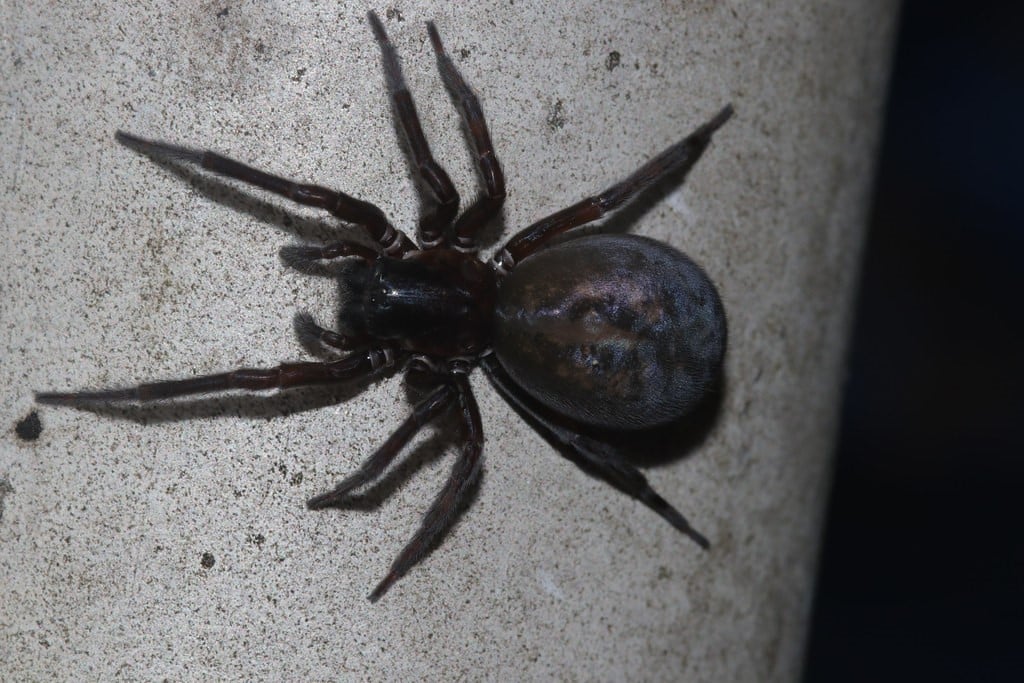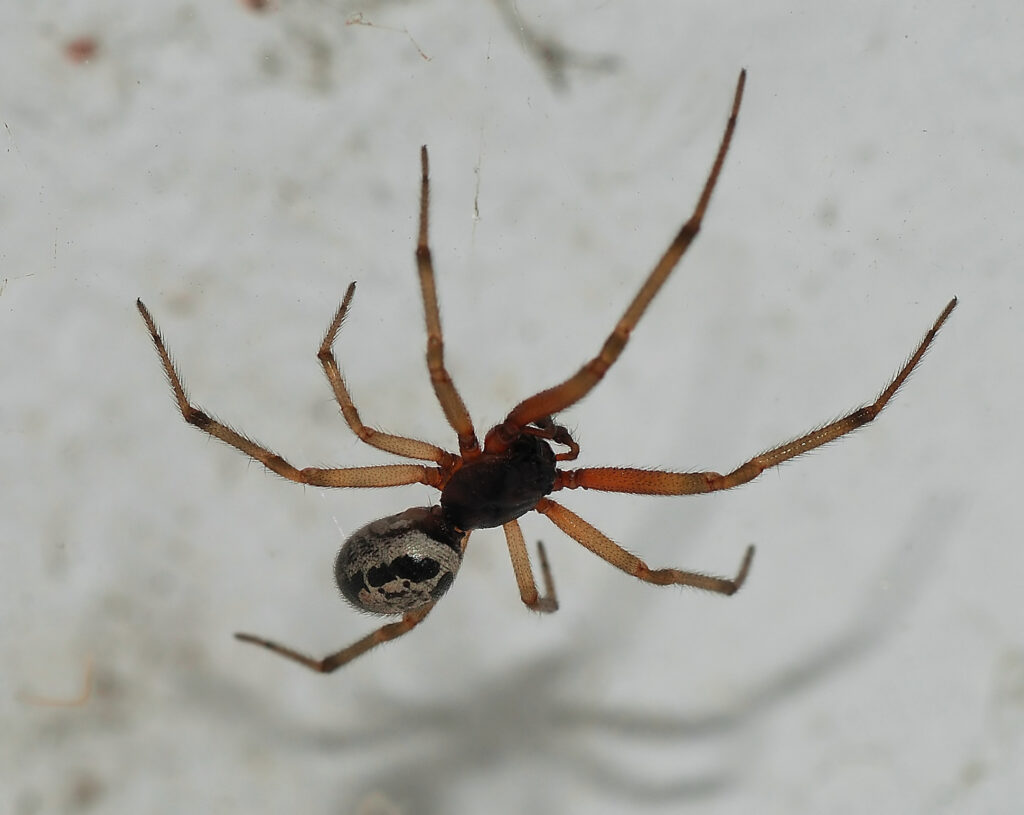Lace web spiders, also known as lace weaver spiders and scientifically known as Amaurobius similis, are intriguing creatures that belong to the family Amaurobiidae. These spiders are commonly found in various regions across the world, including North America, Europe, and Asia. Despite their slightly intimidating appearance, lace web spiders play a crucial role in maintaining ecological balance by controlling insect populations. In this article, we will delve into the fascinating life of these arachnids and uncover their unique characteristics, behaviours, and their significance in our environment.
Physical Description and Identification
The lace web is a medium-sized spider that exhibits diverse physical characteristics, with females being slightly larger than the males. Their bodies are typically dark brown or black, and they possess a distinctive pattern of pale markings on their abdomen, which resembles lace, hence their name. With eight long legs extending from their cephalothorax, they can easily cover a considerable distance, making them agile hunters.
The females’ unique patterns of pale markings on their abdomens are crucial for accurate identification, as they can be mistaken for other spider species. Understanding their physical traits is essential for distinguishing them from other arachnids.

Habitat and Distribution
Amaurobius similis spiders prefer damp and cool environments, commonly inhabiting wooded areas, gardens, and even inside human dwellings such as holes in walls and window frames. They build their intricate webs in dark corners, under rocks, and within crevices, where they can easily ambush unsuspecting prey. Their ability to adapt to different environments contributes to their widespread distribution.
In North America, they are commonly found in forested regions, whereas in Europe and Asia, they are prevalent in temperate climates. Understanding their distribution helps us appreciate their ecological importance in various ecosystems, as they may have different roles in different environments.
Web Construction and Hunting Techniques
The lace web spider’s silk is not only remarkably strong but also possesses a unique characteristic – it reflects ultraviolet light. This feature aids the spider in attracting prey, as many insects are sensitive to UV light. Their orb-shaped webs are constructed with a distinctive geometric pattern, allowing them to capture flying insects with ease.
The design and construction of their webs are intricate processes that involve precise silk spinning and positioning of silk lines. The unique geometric pattern serves not only to ensnare insects effectively but also helps in camouflage and protection from predators.

Diet and Feeding Habits
Lace web spiders are carnivorous predators that primarily feed on small insects and arthropods. Their diet consists of a variety of prey, including flies, moths, beetles, and other spiders. These agile hunters rely on their well-crafted webs to ensnare unsuspecting insects that come within striking distance.
Once a prey item is trapped in their silk threads, the spider detects the vibrations and immediately rushes to immobilise the target with a venomous bite. The venom not only paralyses the prey but also contains enzymes that break down the victim’s tissues, turning it into a liquid that the spider can consume.
Their efficient feeding process ensures that lace web spiders obtain the necessary nutrients to thrive in their respective habitats. Their role as insect predators contributes significantly to the natural balance within their ecosystems, regulating insect populations and reducing potential pest outbreaks in the environment.
Reproduction and Lifecycle
The mating behaviour of lace web spiders is fascinating. Males use elaborate courtship rituals to attract females and avoid being mistaken for prey. Once mating is successful, the female lays her eggs within a silken sac and carefully guards it until the spiderlings emerge. The spiderlings undergo several moulting stages before reaching maturity.
The lifecycle of Amaurobius similis is remarkable, and understanding their reproductive behaviour sheds light on their population dynamics and survival strategies in different environments. The female’s role in protecting and nurturing the egg sac highlights the intricate maternal care provided by these arachnids.
Adults and Females
When lace web spiders reach adulthood, they display remarkable characteristics that distinguish them from other life stages. Adult Amaurobius similis spiders are typically larger than their younger counterparts, with females being slightly bigger than males. The females are especially noteworthy for their prominent pale markings on their dark-coloured abdomen, resembling intricate lace patterns, which give them their common name. These patterns also serve as a crucial visual identifier for the species.
Females play a vital role in the reproduction and survival of the species. After mating, they carefully construct a silken sac to house their eggs. They guard the sac diligently, protecting the developing spiderlings until they are ready to emerge into the world. This maternal care showcases their intricate parental behaviour.
Bites and Venom
Lace web spiders are not aggressive towards humans and do not actively seek confrontation. They prefer to avoid contact and will only bite if they feel threatened or accidentally cornered. Lace web spider bites are generally considered harmless to humans, resulting in mild irritation, similar to a bee sting. However, some individuals may experience allergic reactions, so it is advisable to avoid handling these spiders unnecessarily.
The venom of lace web spiders is primarily designed to subdue their prey and begin the process of digestion. It contains enzymes that break down the tissues of the captured insects, allowing the spiders to feed on the liquefied remains. While their venom is potent enough to immobilise small insects, it poses little risk to humans.
Comparison to Other Spiders
Lace web spiders exhibit several unique characteristics that set them apart from other spider species. However, although their distinctive patterns of pale markings on their abdomens make them easily recognisable from most species of spider, they can sometimes be mistaken for false widow spiders which have similar markings.
In contrast to some other orb-weaving spiders, they do not construct large and highly visible webs. Instead, their webs are relatively small and often positioned in hidden locations, such as under rocks or in crevices.
Unlike some aggressive spiders that actively hunt down their prey, A. similis spiders are ambush predators, relying on their skillfully constructed webs to capture insects that venture close. This hunting strategy is more energy-efficient and allows them to wait patiently for potential meals to come to them.

Interaction with Humans and Other Predators
For the most part, lace web spiders are harmless to humans and should not be considered a threat. In fact, they provide a valuable service by keeping insect populations in check, helping to control potential pests in gardens and homes. However, if accidentally provoked, they may bite, leading to mild irritation, similar to a bee sting.
While they are not dangerous to humans, lace web spiders are part of a complex food web, and they have their predators. Some birds, reptiles, and other spiders are known to prey on lace web spiders, affecting their population dynamics in the wild. Understanding their place in the food chain can provide insights into the delicate balance of predator-prey relationships.
The Role in Ecosystem
Lace web spiders are considered beneficial to their ecosystems. By preying on a variety of insects, they help maintain ecological balance and contribute to the health of their surroundings. Their presence in gardens and forests acts as a natural form of pest control, reducing the need for harmful chemical pesticides.
Understanding their role as natural pest controllers and their contribution to the ecosystem helps us appreciate the significance of these spiders in promoting biodiversity and a healthy environment. Moreover, their presence indicates a well-balanced ecosystem with ample food sources for these arachnids.
Conservation and Threats
As of now, there are no specific conservation measures in place for lace web spiders. However, it is essential to recognise their ecological significance and preserve their natural habitats to ensure their continued existence and contribution to the environment.
While they are not considered endangered species, lace web spiders may face threats from habitat loss due to human activities such as deforestation and urbanisation. Protecting their habitats is crucial in safeguarding their populations and maintaining the balance of nature. Furthermore, educating the public about their ecological importance can foster a sense of responsibility towards their conservation.
Conclusion
In conclusion, lace web spiders (Amaurobius similis) are remarkable creatures with unique features that make them a vital part of their ecosystems. Their intricate webs, feeding behaviour, and role as natural pest controllers all contribute to the delicate balance of nature. Although they may seem mysterious and even intimidating to some, these spiders play a crucial role in maintaining ecological harmony. So, the next time you spot a lace web spider in your garden or home, take a moment to appreciate its beauty and the valuable service it provides in sustaining a healthy environment.
Additional Resources
Sam loves to learn about animals and their habitats. He has been a nature lover from a very young age, and has been writing papers and articles about wildlife for as long as he can remember.
